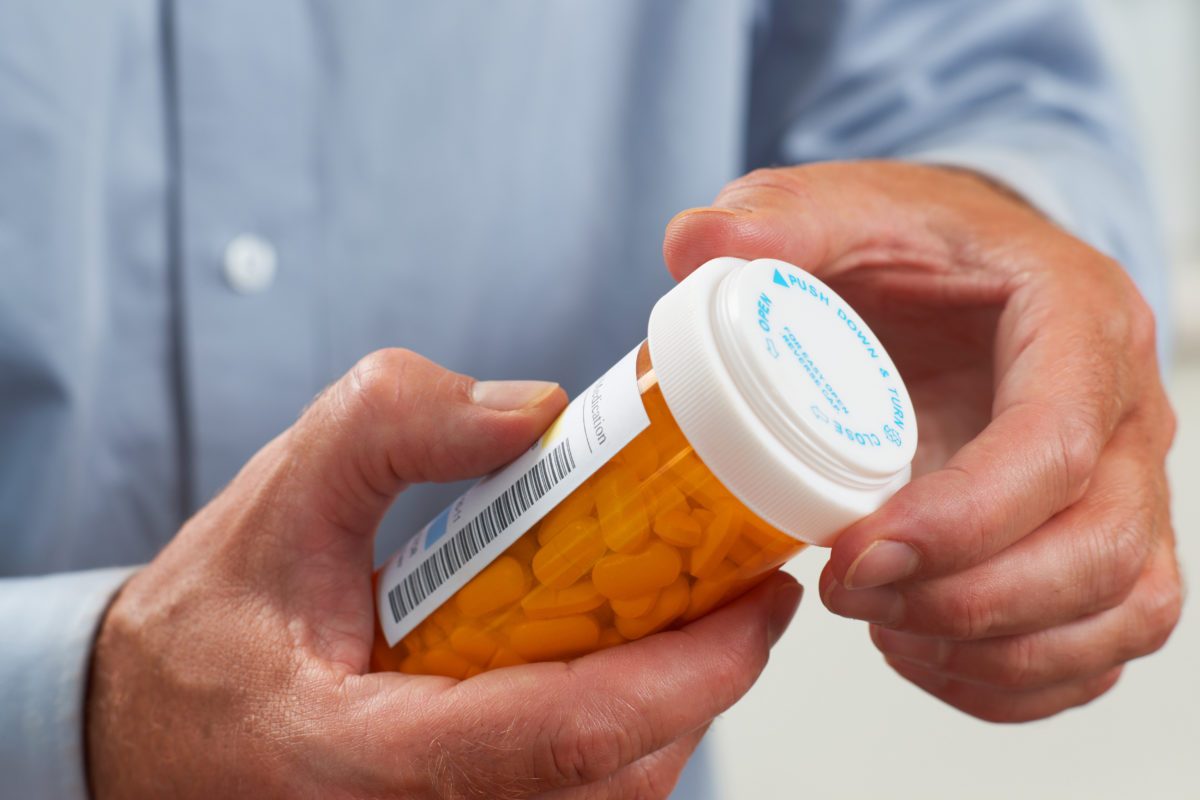Study: Drug plan’s design keeps federal subsidies in check
- August 6, 2019
- By Jill Young Miller
- 4 minute read

Medicare Part D is a rock star in the policy world. The prescription drug plan is considered a role model for publicly financed, privately provided social insurance programs.
The idea: Leverage competition to provide high-quality services at low costs to consumers and to the government. Doing so requires the government to subsidize costs. Yet how efficient is Part D’s design for setting those subsidies?

In a new study, WashU Olin’s Stephen P. Ryan and co-researchers discovered something they say surprised them: Part D’s setup actually inhibits insurers from seeking higher subsidies from the government. It keeps subsidies in check by virtue of the way it’s designed, although that may have been a happy accident.
More on that in a bit.
The researchers first set out to understand how the market works.
“What is the interaction between the rules of the subsidy mechanism, insurer behavior and consumer demand?” asked Ryan, professor of economics. “That’s basically the triangle that we were interested in.”
A quick primer
Medicare is a public health insurance program covering elderly and disabled people. Most people become eligible when they turn 65 and are automatically enrolled in insurance for inpatient and outpatient services. If they decide they want coverage for prescription costs not included in their plan, they can buy a policy under Part D.
Or they can opt out of traditional Medicare and switch to a private Medicare Advantage (MA) plan for bundled coverage—including prescriptions. MA plans are privately run, publicly financed alternatives to government-run Medicare.
The government launched Part D in 2006. Medicare contracts with private firms to sell the coverage, and it regulates and subsidizes those firms. To get the coverage, which is optional, beneficiaries must buy a policy.
Part D is a rapidly growing market that accounts for about one-fifth of federal spending on Medicare, or about $100 billion a year. Consumers bear a fraction of the cost, about 15 percent, because of premium subsidies and risk-equalization programs.
Works like a voucher, despite ‘convoluted structure’
The researchers chose Medicare Part D as their laboratory for a couple of reasons. It has clear rules that allowed them to model a variety of experimental scenarios for insurance firms. Plus, it has strong data on potential customers and the choices available to them.
Through testing different structures, they learned that “the present program, despite its convoluted structure, actually works very much like a flat voucher program,” Ryan said.
Vouchers often perform better than proportional subsidies. That’s mostly because they preserve some elasticity of demand while still allowing policymakers to sort between prescription drug plans, Ryan and his co-researchers report.
Demand elasticity is important because it helps firms model potential change in demand due to changes in the price of a good, the effect of changes in prices of other goods, and many other market factors. If the demand for a good is more elastic, in response to changes in other economic factors, companies must use caution when raising prices.
This, in turn, leads insurance firms who sell Part D plans to keep their bids competitive, minimizing the cost to taxpayers.
Broad implications
The researchers’ findings have broad implications for the design of privately provisioned, publicly subsidized social insurance programs. Traditionally, the US government has provided social insurance programs directly to Americans. But in the past 20 years, efforts have accelerated to move such programs to private markets.
Part D’s design “mutes,” or inhibits, insurers’ efforts to get higher government subsidies because of the complex way it ties together prices for numerous, distinct parts of the program into one “subsidy mechanism.” (That mechanism sets the public funding to private insurance firms.)
“The current mechanism actually did a pretty good job,” Ryan said.“But it is probably not entirely by design, as the subsidy could have been too high or low relative to optimal. It turns out that a combination of all the forces come together to produce something actually not too far from an optimal voucher. It was surprising when we computed that.”
The researchers also learned that insurers’ competition for low-income enrollees kept incentives low for insurers to seek higher subsidies. In addition, tying the subsidy to prices in the related Medicare Advantage prescription drug market—where premiums are typically zero—also kept subsidies stable.
Consumer demand depends on high subsidies
High government subsidies “almost exclusively” drive consumer demand for prescription drug program plans, according to Ryan and co-researchers Francesco Decarolis of Bocconi University and Maria Polyakova of Stanford University School of Medicine.
“Consumers have very low willingness to pay for unsubsidized plans, driven by the availability of close substitutes,” they report.
In fact, they found that Part D “is efficient only if we account for the fact that the government would likely subsidize the same consumers outside of the (Part D prescription) program as well.”
The researchers report their findings in “Subsidy design in privately-provided social insurance: Lessons from Medicare Part D,” forthcoming in the Journal of Political Economy.
The research paper provides new evidence that contributes to the emerging academic and policy discussion of the subsidy mechanism.
“This helps us inform policymakers when they’re thinking about setting up these kinds of subsidy mechanisms in other areas,” Ryan said.
Media inquiries
For assistance with media inquiries and to find faculty experts, please contact Washington University Marketing & Communications.
Monday–Friday, 8:30 to 5 p.m.
Sara Savat
Senior News Director, Business and Social Sciences
